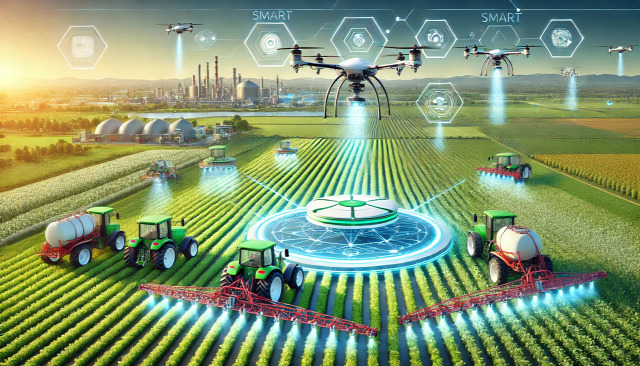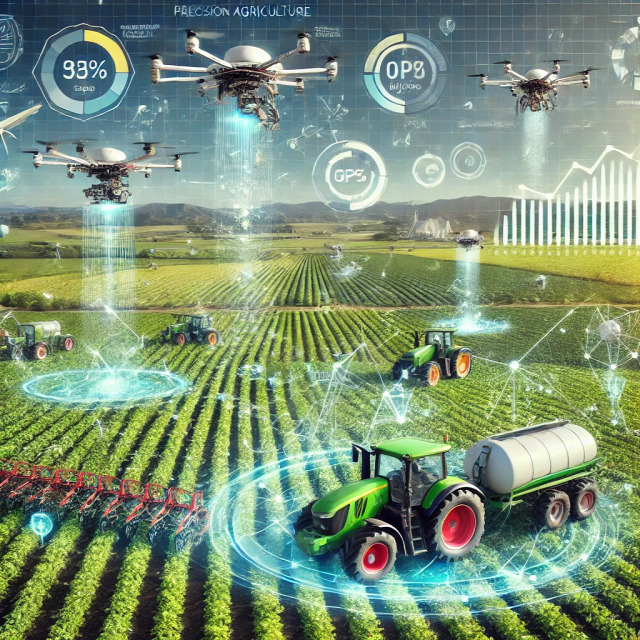
The agricultural sector is undergoing a revolutionary transformation with the integration of smart technologies, and at the forefront of this change is the smart crop scouting and spraying industry. Moving beyond traditional farming practices, this market is redefining how crops are monitored, diseases are detected, and pesticides are applied, ensuring sustainable farming and higher productivity.
The Rise of Smart Crop Scouting and Spraying
Traditional farming methods often rely on manual observation and broad-spectrum pesticide application. While effective to a degree, these methods are labor-intensive, time-consuming, and often lead to overuse of chemicals, harming the environment.
Smart Crop Scouting and Spraying offers a solution through the use of advanced technologies like drones, IoT sensors, artificial intelligence (AI), and satellite imaging. These tools enable farmers to:
- Monitor crops in real time.
- Detects pests, diseases, and nutrient deficiencies at early stages.
- Apply pesticides and nutrients with pinpoint accuracy.
Market Snapshot:
The global smart crop scouting and smart spraying market was valued at $4,689.1 million in 2023 and is expected to grow at a CAGR of 13.86%, reaching $19,554.6 million by 2034 during the forecast period of 2024-2034.
The rapid adoption of precision agriculture technologies is propelling the growth of the smart crop scouting and spraying market, especially in regions with advanced agricultural infrastructure.
Key Market Drivers of Growth
Rising Demand for Sustainable Farming:
- Increased focus on eco-friendly practices and stricter pesticide regulations.
- Smart technologies minimize waste and reduce environmental impact.
Advancements in Drone Technology:
- Drones with multi-spectral imaging and AI analytics provide detailed crop health insights.
- Enables precision interventions and efficient resource usage.
Labour Shortages in Agriculture:
- Declining availability of agricultural labor globally.
- Drives the adoption of automated scouting and spraying solutions.
Government Support:
- Subsidies and initiatives promoting precision agriculture technologies.
- Encourages widespread adoption of smart farming methods.
Integration of AI and Machine Learning:
- AI tools process extensive data on pests, soil health, and weather.
- Improves decision-making through actionable insights.
Applications of Smart Crop Scouting and Spraying
Pest and Disease Detection: Drones and sensors identify pest infestations and diseases early, preventing large-scale crop damage.
Precision Spraying: Automated systems apply pesticides and fertilizers only where needed, reducing chemical use and protecting non-target areas.
Yield Prediction: Smart tools analyze crop health data to forecast yields, aiding in better resource allocation and market planning.
Nutrient Management: Sensors monitor soil and plant health, ensuring optimal nutrient application for healthier crops.
Request for sample research report on the global smart crop scouting and smart spraying market
Global & Regional Market Segmentation
Segmentation 1: by Application
- Smart Crop Scouting Market
- Weed Detection
- Disease and Damage Detection
- Pest Detection
- Nutrient Analysis
- Smart Spraying Market
- Nutrient Application
- Crop Protection Chemical Application
- Herbicide Application
Segmentation 2: by Product
- Smart Crop Scouting Market
- Equipment
- Software
- Smart Spraying Market
- Tractor Mounted and Self-Propelled Sprayers
- Robotic Sprayers
- Drone Sprayers
Segmentation 3: by Region
- North America
- Europe
- Asia-Pacific
- Rest-of-the-World
Key Opportunities in the Market
AI-Powered Pest Control:
- AI models predict pest outbreaks using weather patterns and crop data.
- Helps farmers take proactive measures to mitigate risks.
Integration with Blockchain:
- Ensures traceability in pesticide application.
- Enhances transparency and builds consumer trust.
IoT-Driven Insights:
- IoT devices deliver real-time data on crop health, weather, and soil moisture.
- Enables informed and proactive decision-making.
Eco-Friendly Spraying Solutions:
- Innovations in biodegradable pesticides and water-efficient technologies.
- Supports global sustainability efforts.
Get more insights on the Agriculture Market Research Reports.
The Future of Smart Crop Scouting and Spraying
The smart crop scouting and spraying market is set to redefine agriculture over the next decade. Key trends to watch include:
- Integration of 5G Networks: Faster data transmission will enhance real-time monitoring and remote operation of drones.
- Autonomous Robots: Robotic systems for spraying and weeding will further reduce labor dependency.
- Carbon Farming: Precision tools will support carbon sequestration initiatives, turning farms into carbon sinks.
- Global Collaboration: Partnerships between agri-tech firms, governments, and research institutions will drive innovation and accessibility.
Conclusion
The smart crop scouting and spraying market represents the future of farming, blending technology with agriculture to achieve sustainability, efficiency, and profitability. As global challenges like climate change, food security, and labor shortages intensify, these innovations offer a pathway to resilient and productive agricultural systems.
With continued advancements and support from policymakers, smart crop scouting and spraying is set to become a cornerstone of modern farming, ensuring a sustainable and food-secure future for generations to come.





